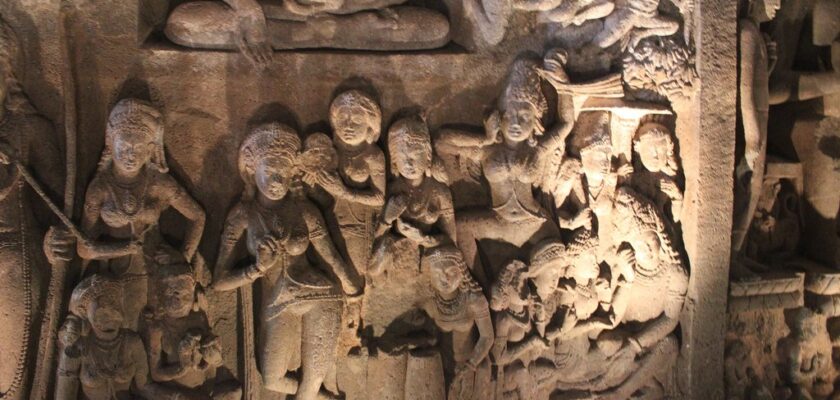Ajanta Caves
Ajanta Cave Temples, carved into the granite Vindhya Mountains in the northwestern Deccan Plateau, are one of India’s greatest wonders. The temples and monasteries, skillfully decorated with carvings made with simple tools, are superb works of art in themselves; sensuous paintings and exquisite sculptures make them masterpieces.
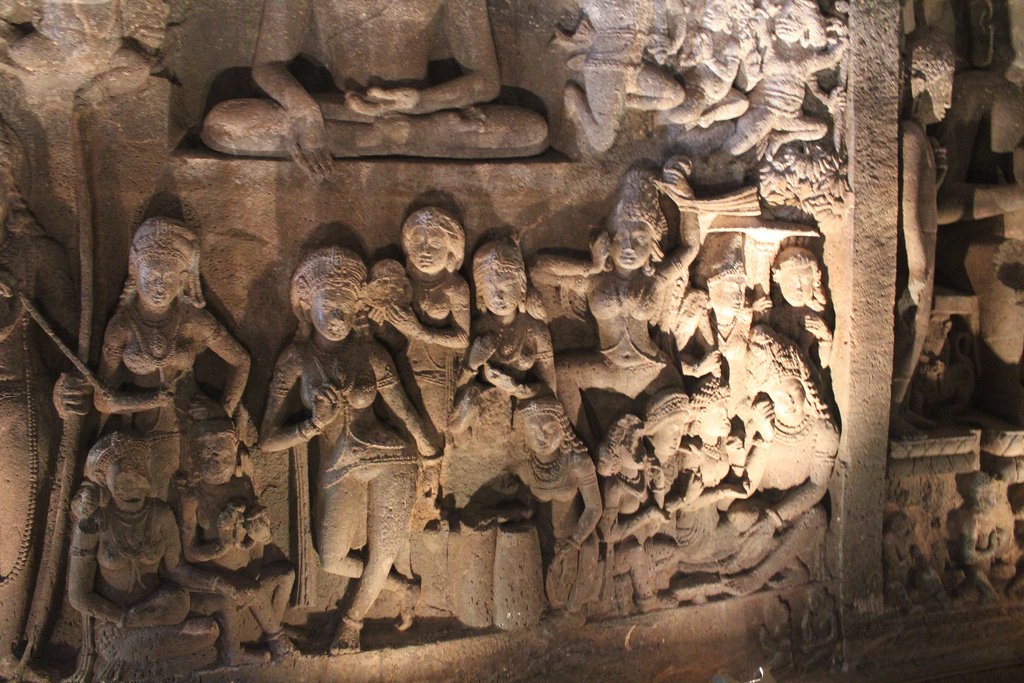
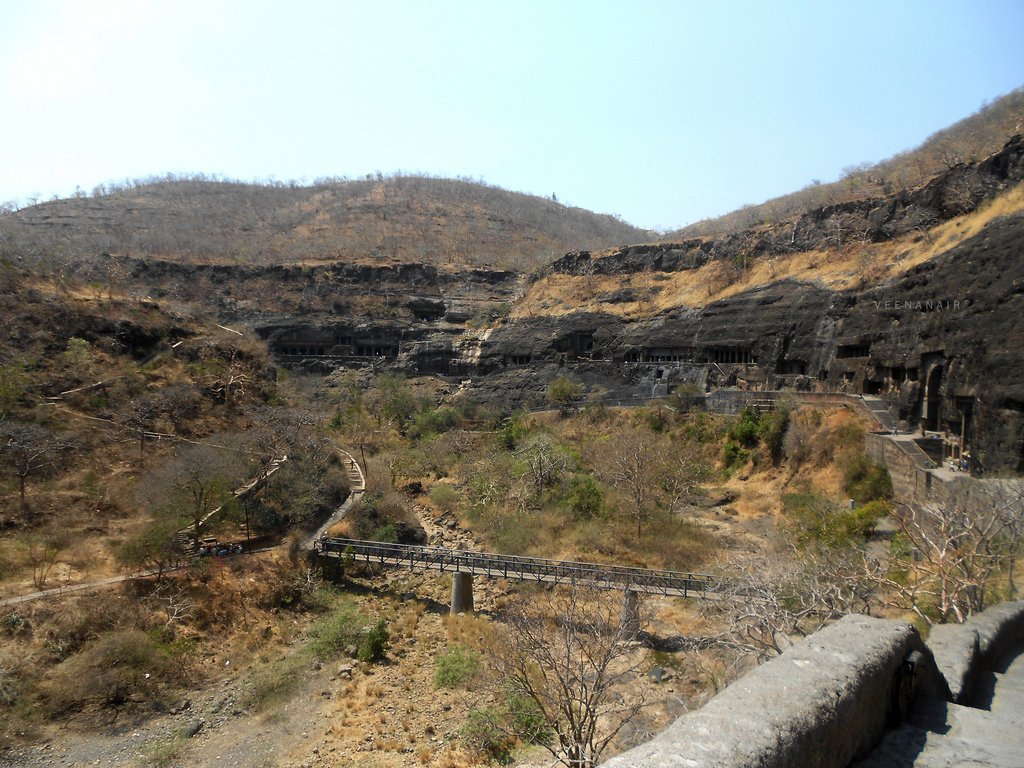
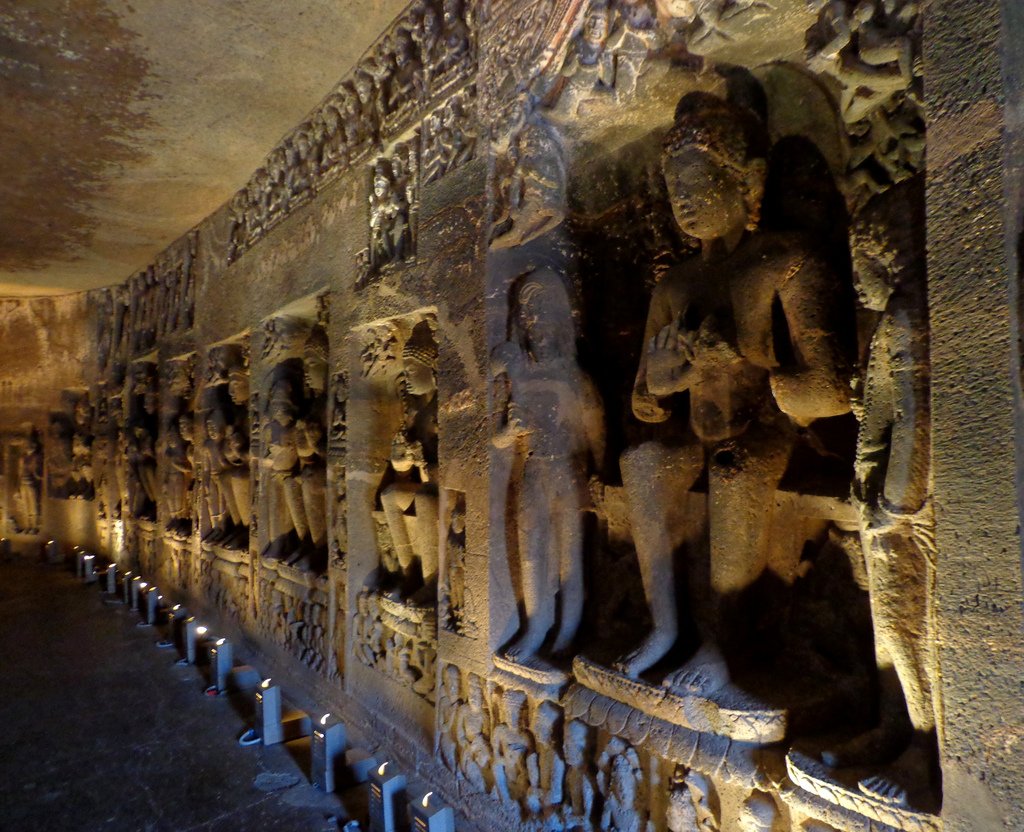
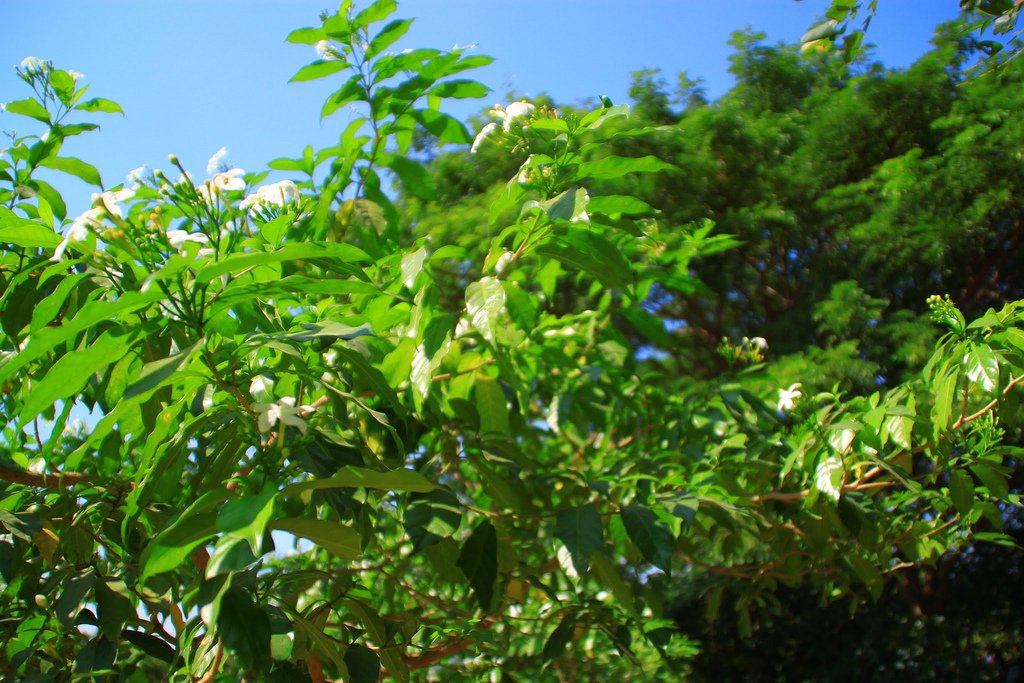
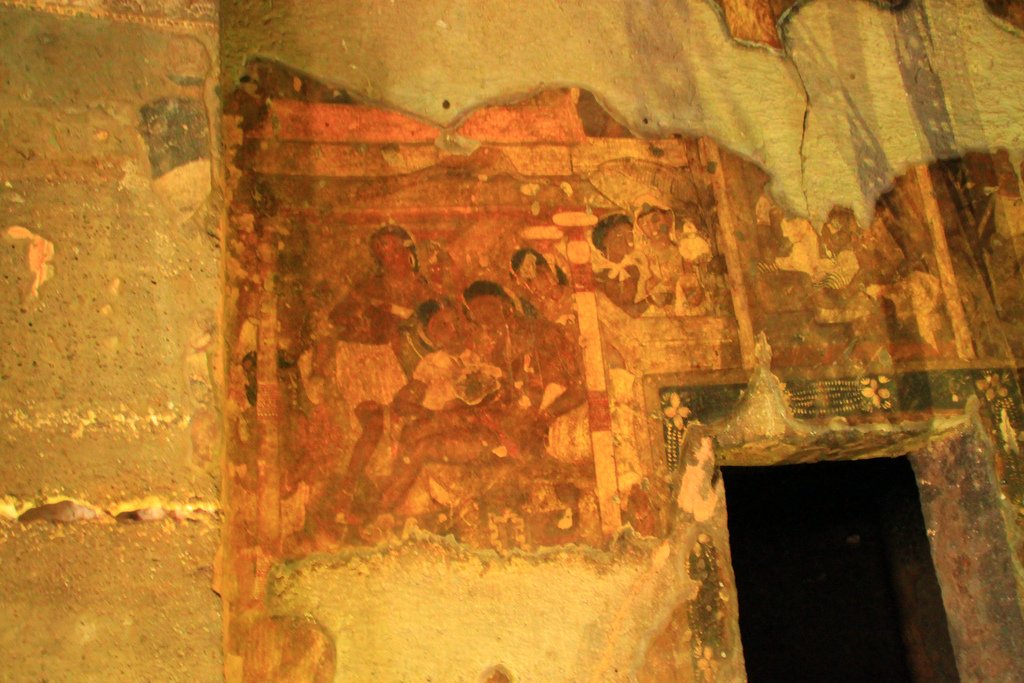
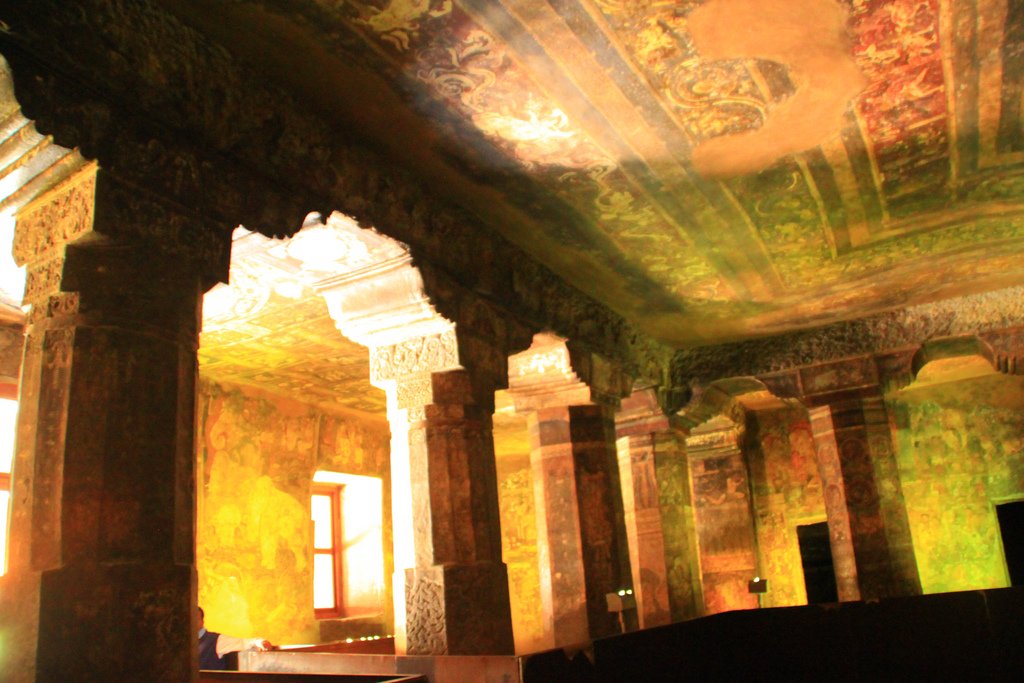
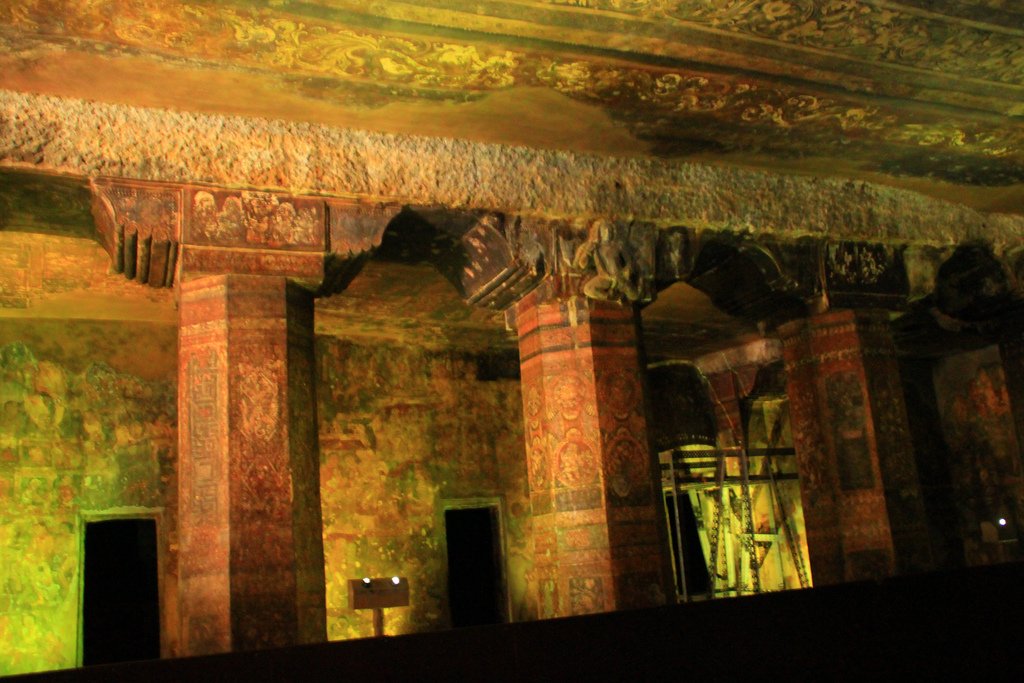
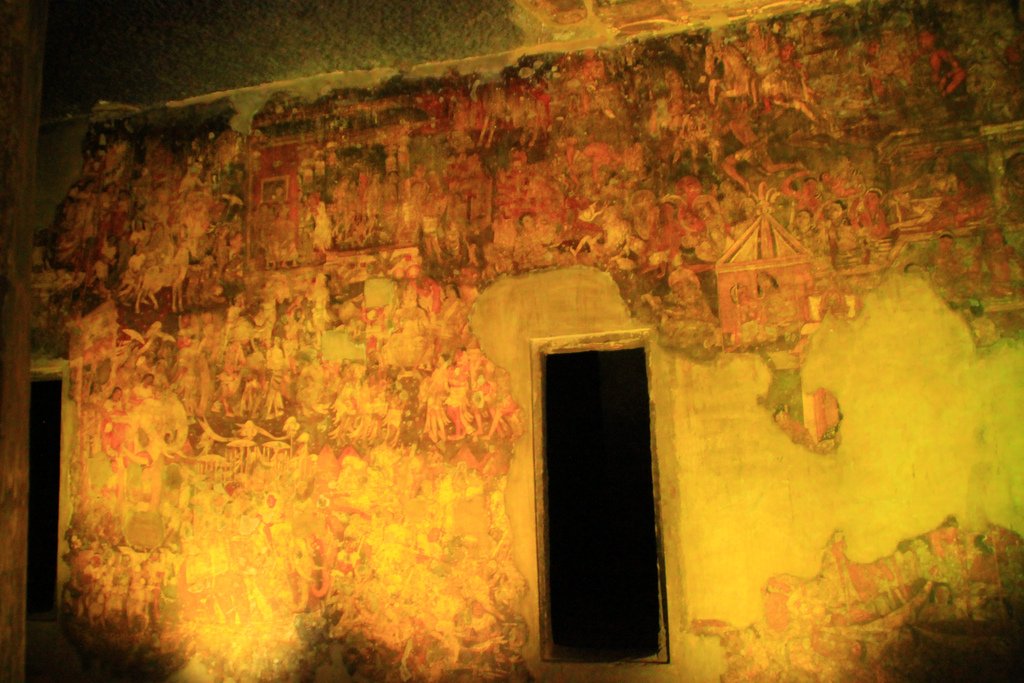
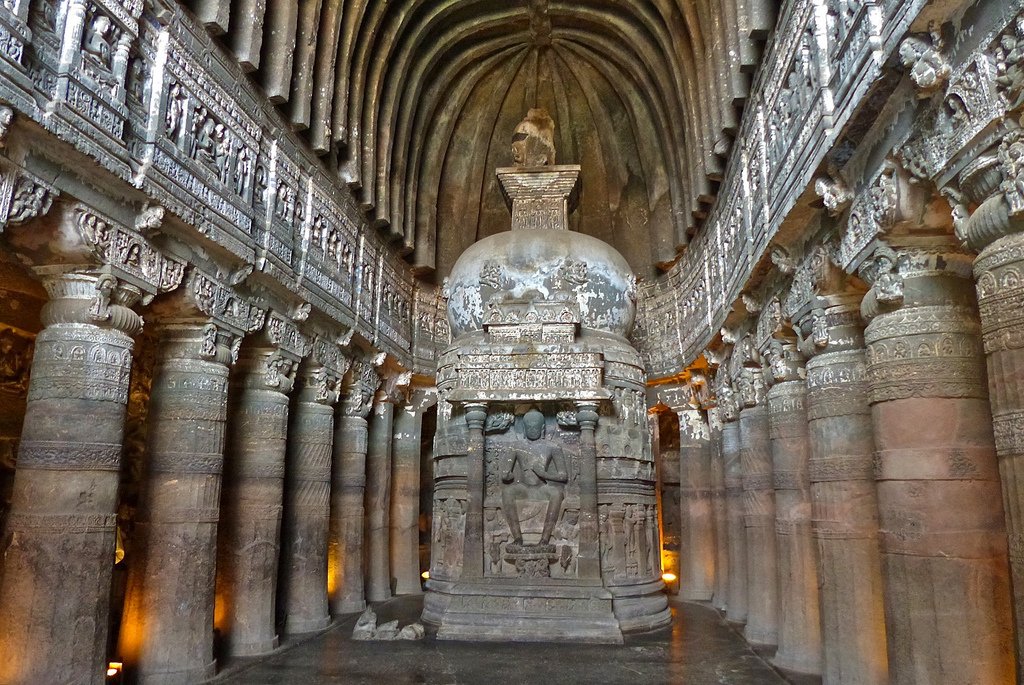
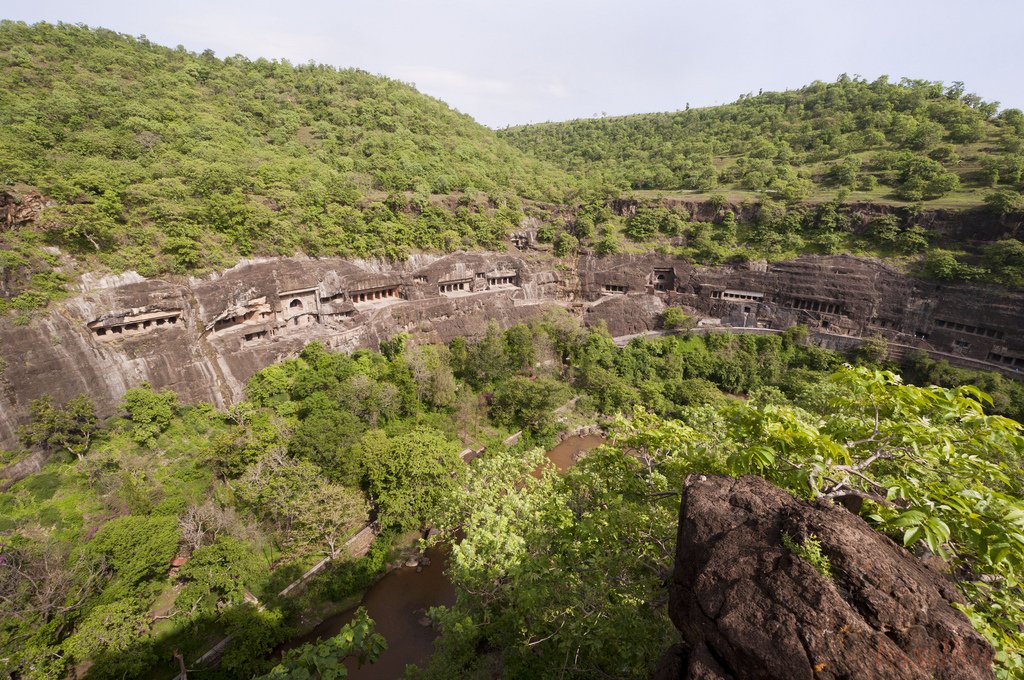
Video: Ajanta Cave Temples
General Information
Indian/foreign 10/250 rupees;videography Rs. 25;09.00-17.30 wt-noon;Licensed guides will give you a tour for Rs 600
Zealously guarding an entire treasure trove of priceless artistic artifacts from the past millennium, the Ajanta Buddhist Caves are located 105 km from Aurangabad. They can easily be called the Louvre of ancient India. This place is much older than Ellora and is also a UNESCO World Heritage Site.
.The Ajanta cave temples were created in the 2nd century BC, during the dynasties of the local rulers. The caves remained untouched for thousands of years until they were accidentally discovered in 1819 by British soldiers hunting tigers. The caves at Ajanta are better preserved than those at Ellora, where they were permanently used as dwellings.
These are some of the earliest religious structures in the country. Ironically, the heyday of Ellora brought the decline of Ajanta, and historians believe that the site was abandoned because attention shifted to the new Ellora caves. After being abandoned by humans, the caves were taken over by wildlife. They were forgotten about until 1819, when British hunters led by John Smith stumbled upon them by chance.
.
Of these 29 Ajanta Buddhist caves, five are temples and the rest are monks’ cells. They are hollowed out in a horseshoe-shaped cliff 75 meters above a gorge through which a small river runs.
.
Originally, each temple had its own stairway down to the water. The caves are numbered from 1 to 29, from west to east. By touring just nine of them, you will get an idea of the temple complex as a whole. Start in the middle, with the oldest cave, then walk east, before returning to the later caves, which can be accessed from the western entrance.
.The Ajanta cave temples are worth a visit primarily to see the restored “frescoes” – tempera paintings that adorn many of the caves’ interiors. Although several other examples of ancient craftsmanship are as good as these paintings in artistic value and beauty of execution, these paintings are certainly valued as cultural heritage. It is believed that natural paint pigments were mixed with animal and plant adhesives to stick them to dry surfaces. Many caves have small holes in the floor, similar to craters, which served as palettes while painting.
.
Despite their age, the drawings in most caves are not badly preserved. Many believe that they have been preserved due to the fact that the caves have been in relative isolation from human influence for several centuries. But, be that as it may, it cannot be said that the drawings have not rotted in the slightest. Signposts at the entrance to the complex contain a whole set of prohibitions and permissions designed to reduce human impact on the vulnerable areas. Please adhere to them.
.Ajanta Caves
Ajanta’s thirty caves are nestled in the sheer rock of the horseshoe-shaped gorge with the Waghora River flowing below. All the caves are consecutively numbered except caves 29 and 30. The numbering has nothing to do with the chronology of the caves; the oldest caves are in the middle, surrounded by newer ones on either side.
Caves 3, 5, 8, 22, and 28 through 30 are either closed or cannot be accessed. Other caves may occasionally be closed for restoration. For example, at the time of our visit, cave 10 was completely covered with scaffolding on the outside. During the high season, visitors are allowed to stay in the caves for 15 minutes at a time. In many caves you have to take off your shoes (you can walk in socks). Five of the caves are chaitiyas and the other 25 are viharas. Caves 8, 9, 10, 12, 13 and part of cave 15 are ancient Buddhist caves, all others date from the early 5th century (Mahayana period). In the earlier, stricter and simpler school of Buddhism, the Buddha was never directly depicted – his presence was indicated by a symbol, such as a footprint or the “wheels) of the law.”
Cave 1 of the Mahayana vihara, was one of the last to be found during excavations and is more beautifully decorated than the others. Here you will find a version of the Bodhisattva Padmapani (Bodhisattva Padmapani), the most famous and iconic work of art in Ajanta. A veranda at the front of the cave leads to a large assembly hall containing many sculptures and wall paintings, famous for their sumptuous perspective and impressive detailing of clothing, household items and facial expressions. All the colors in the painting, with the exception of the bright blue (which was derived from lapis lazuli mined in Central Asia), came from local minerals. Note the ceiling, which depicts four deer with one head on all of them.
.Cave 2 is also a Mahayana vihara with decorated columns and capitals and with several drawings. The ceiling has geometric and floral ornamentation. The frescoes depict scenes from Jataka (Jataka) tales, including a dream of the Buddha’s mother: an elephant with six tusks that marked the enlightenment of her son..Cave 4 is the largest vihara in Ajanta, with 28 columns supporting its ceiling. Although the cave was never completed, it contains many impressive sculptures, including people fleeing from the “eight great evils” under the protection of Avalokiteshvara.
.Cave 6 is the only two-story vihara in Ajanta, but the lower floor has partially collapsed. There is a statue of a seated Buddha inside, and the door to the temple is decorated with an intricate pattern. Upstairs, the hall is surrounded by cells with drawings on the doorways.
Cave 7 features an unusual design with a porch in front of a veranda that leads to four cells and a beautifully decorated temple with sculptures.
.Cave 9 is one of the oldest chaityas in Ajanta. Although it dates from the early Buddhist period, the two figures near the entrance were probably installed later, already in the Mahayana era. On both sides of the cave and around the three-meter high dagoba are columns. The vaulted roof retains traces of wooden beams.
.Cave 10 is considered to be the oldest (200 BC). It was the first to be discovered by British hunters. It is similar in design to Cave 9; it is the largest chaitya. The façade is much weakened and many of the drawings have suffered, in some places from inscriptions left after the discovery of the caves. On one of the columns is carved Smith’s name, which he left for posterity.
Cave 16 is the vihara with the best drawings in Ajanta. The cave served as the entrance for the entire complex. The most famous drawing, the “dying princess”, depicts Sundari, the wife of the Buddha’s half-brother, Nanda. According to legend, Sundari died when she learned that her husband had renounced earthly life (and thus her) to become a monk. Carved figures support the ceiling, whose architectural details mimic wood. There is a sculpture of a Buddha teacher on a throne with a lion teaching the noble eightfold path.
.Cave 17, with dwarves surrounding the columns, contains the best preserved and most varied drawings in Ajanta. Other famous images include a princess applying makeup, a prince trying to seduce his lover by drinking her wine; a Buddha coming home after enlightenment to apologize to his wife and astonished son. A detailed picture tells the story of Prince Simhala’s expedition to Sri Lanka: he and 500 companions are shipwrecked near an island inhabited by cannibals who turn into beautiful girls to capture and eat their victims. Simhala is rescued on a flying horse, and afterward returns to conquer the island.
.Cave 19 is a stunning chaitya with very detailed carvings on the facade; the main feature of the cave is the horseshoe-shaped window. Two beautiful Buddha statues are on either side of the entrance. Inside is a triple dagoba, with an image of the Buddha in front of it. On the outside of the cave is a stunning image of the Naga king, facing west. His neck is wrapped around seven snakes. His wife, who has only one cobra around her neck, sits beside him.
.Cave 24, if completed, would be the largest vihara in Ajanta. But you can see how these caves were built: huge galleries were carved into the rock and then the rock between them was collapsed.
.Cave 26, a huge, ruined chaitya, is now perfectly lit. It has several sculptures that are not to be missed. On the left wall is a huge sculpture of a “backward-turned Buddha” who is preparing to go to nirvana. Other images include the Buddha being tempted by an evil Mayan deity.
.Cave 27 is actually a vihara, which is connected to cave 26, a chaitiya.
.Information
The storage room next to the toilets near the main ticket office is a safe place where you can leave your equipment for storage for one item for four hours) in case you come to Ajanta on your way from Aurangabad to Jalgaon or vice versa. The caves are at the end of a steep short climb that starts near the ticket office; older people can book four porters to take them up to the top in a chair (400 rupees).
.
For reasons that are hard to explain, at the time of writing, the authorities were plotting to build a new complex near the T-junction. Rumor has it that they are going to replicate the main caves under modern climate-controlled domes!
Road to and from Ajanta caves
Buses from Aurangabad or Jalgaon stop at a T-junction (where the highway meets the road to the caves), 4 km from the caves. From here, after paying a token Rs. 7, hurry to the departure point of the eco-friendly buses, which can be recognized by their green color (with/without cond. Rs. 12/7). They will take you all the way to the caves. The buses return regularly to the T-junction (every half hour, last bus at 6:15 pm).
.All MSRTC buses that go through Fardapur stop at the T-junction. After the caves close, you can catch a bus to Aurangabad or Jalgaon near MTDC Holiday Resort in Fardapur, one km from the main road to Jalgaon. Cabs are available in Fardapur; for Rs 900 you will be taken to Jalgaon.
.